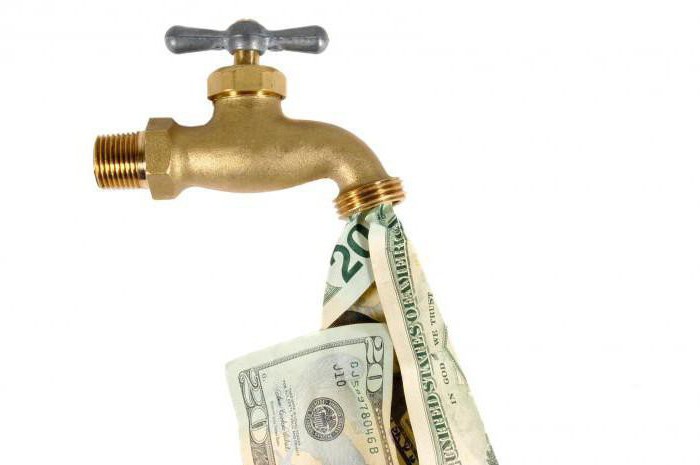A cash gap in the budget may arise due to late receipt of funds. Further discussion will be held about what are the causes of these circumstances, how they can be predicted and the least painlessly avoided.
Cash gap determination
Cash gaps are a temporary shortage of funds needed to pay off current liabilities. For example, the time has come to pay taxes, and the receipt of revenue from buyers has not yet been made. A tool to cover the cash gap can serve as short-term loan or a loan necessary to replenish working capital.
An equally common banking service is overdraft. The bank can replenish the client’s current account so that the latter can pay the latest settlement and cash documents if there are no own funds or they are not enough. Moreover, the amount provided on credit fully covers the missing.
How to calculate the cash gap?
The formula for calculating the cash gap is as follows: DS + PD-PP = ODS, where:
- DS - funds present on the account at the beginning of the trading day;
- PD - actual receivables;
- PP - the amount that should be paid to suppliers;
- ODS - the amount of money that remained at the close of the trading day.

If the calculation formula resulted in a negative value, then you need to try to reduce accounts receivable.
Why do cash gaps appear?
Temporary cash gaps are the shortfall in revenue over a certain period of income, without which it is impossible to make urgent expenses. The latter are provided for by the approved budget painting taking into account the sources of financing the budget deficit.
The cash gap of the budget usually arises due to certain objective circumstances, namely: the seasonal nature of measures to finance an adequate delivery of goods, vacation pay, payment to budget employees for travel, capital expenditures, etc. All this is an uneven spending of a significant part of the costs.
For the main temporary cash gap is periodic in nature and regular annual repetition. Therefore, nothing prevents the development of a methodology that allows you to plan temporary cash gaps based on the forecast values of income and expenses during certain periods of the financial year, with the exception of emergency situations.
External causes of cash gaps
The reasons for cash gaps can be different. For example, such a problem may occur due to the following external factors:
- “Banking” force majeure, for example, a sudden revocation of a license from the bank in which the organization is serviced.
- A change of address requires a re-registration at the tax service unit and at the Pension Fund. As a result, it turns out that the company's accountant, remembering that there was an overpayment in the last quarter, does not make payments in the current reporting period. And due to the change of details, the credit of the payment will most likely not be made, and there will be a temporary cash gap.

- The transition to a simplified taxation system cancels the payment of VAT, advance tax on property tax and income tax.June is coming, and by sending an urgent electronic payment to the supplier, the accountant finds out that the tax account has blocked the company's current account for the entire remaining amount due to the fact that a report on VAT for the 1st quarter was not provided. And unlocking a current account is far from a quick task, as a result, we have a shortage of funds.
On the internal causes of cash gaps
Internal factors are as difficult to foresee as external ones. For example, sometimes the buyer instead of paying money to the company asks to set off the counter homogeneous claim or the existing insurance deposit, if any. In addition, the owner of the company may require the withdrawal of funds in their favor, being guided by paragraph 11 of Art. 251 of the Tax Code of the Russian Federation.
How to prevent a cash gap?
Cash gaps - this is a deficit cash, which is far from always foreseeable. But still there are several ways to prevent it:
- Create a billing calendar. The planned cash flow in many cases avoids cash gaps. This document should indicate: to whom, when and how much should be paid. Payments of debtors must also be indicated in the payment calendar.

- Planning. It is recommended to combine the receipt and payment of money.
- Prepayment. You can give a discount to those customers who can pay for part or all of the goods at the time of placing the order.
- The fight against receivables.
On loan options to exit the cash gap
Cash gaps are the shortage of funds in the current account that is predicted at a certain time of the current financial year. You can solve this problem through one of the following loan options:
- Suppliers. First, you should inform the suppliers (if work with them has long been established) about their financial needs. There is a high probability that the supplier will be interested in investing in the benefit of a company experiencing temporary difficulties.
- Sale of receivables and purchase orders. If you have large invoices issued to customers, you can try contacting a factoring company. True, such structures usually only redeem those accounts, the payment of which is guaranteed, and the size of the discount they have is quite large - up to 25% of the amount.
- Bank. Getting a large loan amount from a bank usually requires personal guarantee. In order not to risk your own property, you can reduce the amount of the requested amount.
About tactical and strategic management errors
A cash gap often arises from the fact that there is an imbalance in cash flow budgets:
- financing of different or related business lines within the same group of companies;
- provision of resources depends on each other and on how coordinated the actions of managers are.
If the partner’s solvency does not support any collateral, and the risk lies only with the lender, this serves as an aggravating factor. This is typical for large corporate companies practicing the development of various types of activities.
The miscalculations of management in decision making fall into the same risk group. For example, if funds were withdrawn from circulation to finance investments in a new project, which gives hope for a quick return. A similar problem threatens enterprises whose income is generated due to several partners whose negative business situation will immediately affect the supplier enterprise. Companies that have been cooperating with budget orders for a long time, or a small business, the riskiness of whose client base is very high, are faced with the same thing.
Account receivable optimization
When you have already taken a loan to bridge the cash gap, you should think about how to quickly repay it. So, early receipt of receivables is a good option for solving this problem.
The main ways to optimize receivables:
- exclusion from the number of partners of enterprises that have a high degree of risk;
- use of such methods of payment of receivables as a bill of exchange, security, etc .;
- development and implementation of settlement principles between the company and counterparties over the future period;
- development of conditions for the collection of late payments;
- debt refinancing.






